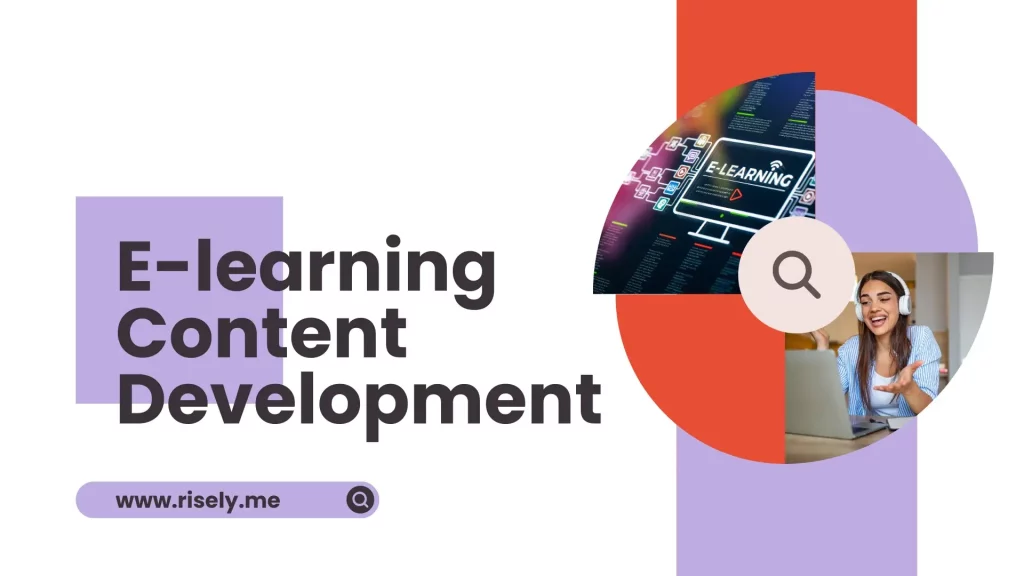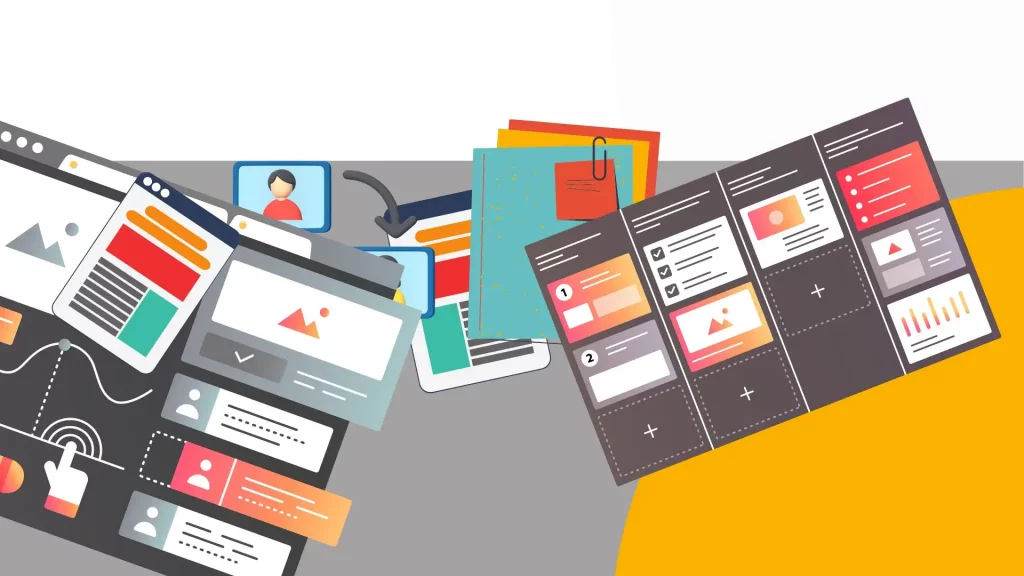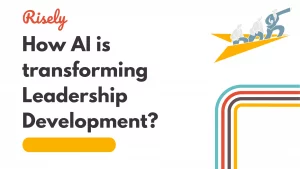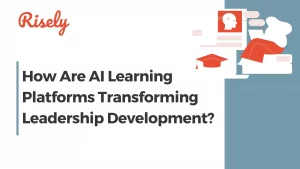The L&D Manager’s Guide to E-learning Content Development
It’s high time e-learning content development got a much-needed revamp. After all, no one enjoys cookie-cutter text and visuals sprinkled with a bit of dialogue and a couple of quizzes. The need is obvious; the trouble lies in shaping this content development process to accurately reflect the present realities. In this blog, we will explore ways to supercharge your team’s e-learning content development. It will give you the knowledge and tools you need to make interesting e-learning courses that keep learners at work truly engaged.What is e-learning content development?
E-learning began with distance education programs in the early 1900s. When computers came along, digital learning began to grow faster. This led to the creation of computer-based training (CBT) programs. Over time, e-learning changed from simple text-based lessons to exciting, interactive experiences filled with multimedia. The rise of the internet and mobile devices made digital learning even easier and more available to everyone. Now, e-learning includes many types of formats, such as online courses, virtual classrooms, webinars, and mobile learning. In the latest updates, e-learning is taking an AI-powered avatar which focuses on personalization and scaling learning and development strategies.E-learning content development refers to the process of building the learning content, the design experience and it’s delivery mechanisms. It aims to create great learning experiences, provide value to teams and support them in reaching business outcomes with effective learning and development.
What are the common formats of e-learning content?
There are many options in the market for e-learning content development! Each format of delivering e-learning offers unique opportunities to engage learners and deliver information effectively. Choosing the right format depends on the learning objectives and audience preferences.- Online courses provide structured learning modules accessible anytime, anywhere.
- Virtual classrooms simulate a traditional classroom experience through live interactions and discussions.
- Webinars offer real-time presentations and allow for participant engagement.
- Mobile learning caters to on-the-go learners, providing flexibility and convenience.
- AI-powered learning is great to scale up personalized learning.
| E-learning Content Format | When should you use them? | Where not to use them? |
|---|---|---|
| Text-based content like articles, white papers, and e-books | Suitable for in-depth explanations and theoretical learning | Not great for practical, application-oriented learning |
| Video lessons, either pre-recorded or live, or audio formats like podcasts | Demonstration and tutorials to support hands-on learning | When learning content needs regular updates |
| Interactive Modules such as clickable, scenario-based learning experiences | Suitable for simulations of real-world situations and role-play training | Hard to scale for multiple uses and applications |
| Webinars and Live Online Sessions | Connecting with experts for collaborative learning and immediate feedback | Not suitable for scenarios without common challenges |
| Microlearning content through nudges, emails | Suitable for learning on-the-go with personalization | Ideal for just-in-time learning but not sufficient alone for in-depth training |
| Blended Learning Packages | Mix of self-paced and instructor-led content is great for flexible and independent learning | Not suitable for situations where self-directed learning is difficult |
Why should you invest in e-learning content development?
Investing in e-learning content development is the need of the hour for great L&D initiatives.- First, it’s vital because learning has gone truly online. For instance, leadership development is no longer contained in classroom and halls. Instead, it’s happening more and more at a personalized level every day with AI-powered tools like Risely.
- Second, handling e-learning content development gives you the charge to bake your values and systems inside. It is an effective way to align e-learning content with your team’s true needs and objectives rather than relying on one-size-fits-all content created otherwise.
- Third, investing in building a content repository of your own is an effective way to showcase a positive employer brand. There are a few great examples like AirBnB’s Data University which is known for quality content, effective learning experiences for people, and major business impact arising out of the skill development ecosystem.
What does good e-learning content look like?
Good e-learning content development process focuses on five key aspects. When you apply these principles while building a digital learning experience for your team, you can create e-learning courses that get learners interested, improve knowledge retention, and promote real changes in behavior. Let’s explore each of them in detail below:#1 The written content
The written content is the base and backbone of your e-learning content development process. For formats like e-books and blogs, it forms the mainstay. The scripts and outlines are vital for video and audio material. Overall in the e-learning content development process, you should ensure that:- The written content is in easy to understand language. It also reflects the brand voice and tone of your company.
- If needed, it should be accurately translated into multiple languages to increase accessibility.
- You should supplement theoretical content with examples, case studies, and application-oriented modules to increase engagement and knowledge transfer at work.
- It should be regularly updated to reflect the current state of affairs. This is particularly important for mandatory trainings like legal compliance which impact business operations.
#2 The visual design
The visual design in e-learning content development needs to align with similar principles. While ensuring that it is reflecting toward the right learning objectives, keep simplicity in mind. Also focus on using your brand’s color palette and other visual elements. These build a sense of continuation and consistence throughout. You can look into tools like the W3 Consortium’s Content Accessibility Guidelines to ensure that e-learning content hosted on web is in line with standards. It includes details on key steps such as including alt texts for images. providing text captions, and using contrasting colors in design.#3 The organization and roadmap
Next up, in the process of developing e-learning content, the organization and structure play an important role. Proper organization with distinct learning modules ensures that learners can easily navigate through the material, understand the hierarchy of information, and access relevant resources efficiently. A well-structured content layout helps in maintaining learner engagement, promoting knowledge retention, and ultimately achieving the desired learning outcomes. By organizing e-learning content effectively, you streamline the learning process and enhance the overall experience for your audience.#4 The communication around content
When delivering e-learning for your team, communicate what is happening and why. Your participants already have busy schedules and multiple responsibilities to handle. Your job is to share training needs and explain how it will work and impact their lives tangibly. Key points should focus on how employees can use this training to their advantage, how to interact with the material, and where to apply what they learned. Otherwise, you will have a hard time securing their buy-in. It also ties into the next part, connecting learning content with goals.#5 Alignment with learning goals
One important part of instructional design is making sure all content helps achieve the learning objectives. Before you create any content, define what learners should be able to do after the training. These learning objectives need to be clear, measurable, achievable, relevant, and time-based, which we call SMART. When you connect the content to these goals, it creates a better learning experience. Each piece of content should help learners understand and master the subject better.How can you improve your e-learning content development process?
The e-learning content development process typically moves through four stages:- Initial Planning and Goal Setting: The first step in the development process is careful planning and setting goals. In this stage, make sure to clearly explain the purpose of the elearning content. It is important to identify the target audience and define the learning outcomes you want. You should also think about the budget, timeline, and the resources you have. Creating a clear design vision is very important in this phase. The design vision includes how the elearning content will look and feel. This involves branding, user interface (UI), and user experience (UX) factors.
- Design and Storyboarding: Once you finish the first planning phase, the next step is to design and storyboard the e-learning content. This step includes outlining the content structure. You will also create a visual guide of how the course will flow. A detailed plan for each module and lesson is important too. Storyboarding makes sure the content is in a logical order. It helps create a smooth digital learning experience. Think of it like making a blueprint for your elearning course. It lays out the key parts and flow.
- Content Creation and Assembly: With a clear storyboard as a guide, the next step is content creation and assembly. In this stage, you will develop the learning materials. This includes text, images, videos, audio narration, and activities. Use your creativity to present the information in an interesting and effective way. Good visuals, clear audio, and interactive elements can really improve the learning experience. Tools like the iSpring Suite can be very helpful at this stage. They provide features for making interactive quizzes, simulations, and multimedia presentations.
- Testing and Quality Assurance: Rigorous testing and quality assurance are paramount before launching your elearning. This phase involves thoroughly reviewing and evaluating the content for accuracy, completeness, functionality, and user experience. Conduct testing on different devices like smartphones, tablets, laptops, and browsers to ensure compatibility.
#1 Bring in the experts
Subject matter experts play a crucial role in e-learning content development by providing accurate and relevant information. Their expertise adds credibility to the course content and ensures that learners receive high-quality information. Collaborating with SMEs (both internal and external) helps in creating content that is up-to-date and aligns with industry standards. It is essential to involve SMEs from the beginning of the development process to ensure that learning objectives are met effectively. Open communication and feedback exchange between instructional designers and SMEs are key for successful e-learning content development.#2 Use (not misuse) AI
When deciding the best way to move forward, think about your technical skills and budget. Also, consider what your target audience needs and what features you want. Focus on user experience, making things easy to use, and ensuring you can create content that works well with your learning management system. AI tools are in vogue and they are great for personalizing e-learning content for your teams. For instance, the iSpring Suite provides strong tools to change PowerPoint presentations into engaging elearning modules. This makes it a great choice for people who know Microsoft Office tools. A few more recommendations for e-learning tools from us include:| Tool | Where to use it? |
|---|---|
| Risely | Personalized AI-driven leadership development for people managers |
| Murf AI | Convert text to speech easily |
| Midjourney | Create custom illustrations to enhance the visual aspect of your course |
| DeepL | Translate course content effectively across multiple languages |
| Notion | Organize the course content during and after the design process |
#3 Ask feedback, and implement it
Implementing feedback loops and using an iterative design process are important for making high-quality eLearning experiences. Regularly collect feedback from subject matter experts, instructional designers, and learners during the development process. This approach helps you find areas that need improvement. It also helps you enhance the content and make sure the final product fits the needs of your audience. Including feedback from learners and content experts can really boost the training’s effectiveness and relevance.#4 Make it accessible for everyone
Accessibility should be very important in the e-learning content development process. You need to ensure that your courses can be used by learners with disabilities. Follow accessibility standards, like the Web Content Accessibility Guidelines (WCAG). Look at things such as color contrast, font size, and use alternative text for images. It’s also important to have keyboard navigation. Providing captions and transcripts for audio and video is a must for learners who have hearing difficulties. By focusing on accessibility, you help create a more inclusive learning space for everyone.#5 Keep the updates and improvements running
E-learning content is a living document, so constant updates and reviews need to be part of the process. This is particularly true for consistently updated learning areas, such as tech handbooks featuring new software use cases or legal compliance guides that consider specific laws and norms. Hence, ensure that you schedule reviews and renew the content accordingly. Further reading: 3 Reasons Why Your Digital Learning Strategy FailsTo Sum Up
In conclusion, to master the eLearning content development process, you need to understand how it is changing. It is important to add interactive elements to keep learners engaged. Make sure your content matches your learning objectives. Follow best practices for making your content accessible and inclusive. This will help create powerful eLearning experiences. Use feedback to improve your designs over time. It is also key to pick the right tools and platforms for smooth content creation. Stay current with trends and use new multimedia strategies to make the learning journey better!Deeksha, with a solid educational background in human resources, bridges the gap between your goals and you with valuable insights and strategies within leadership development. Her unique perspectives, powered by voracious reading, lead to thoughtful pieces that tie conventional know-how and innovative approaches together to enable success for management professionals.
Make effective content with the effective learner personas.
Grab Risely’s free template to create learner personas for your team.







